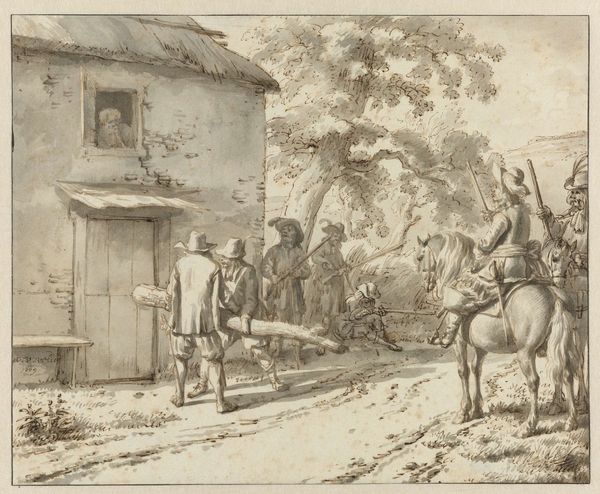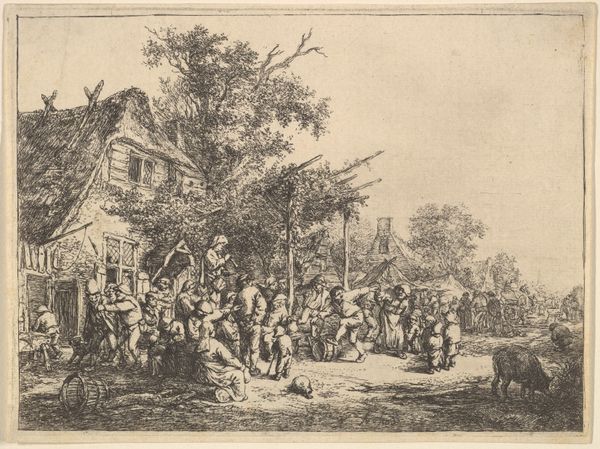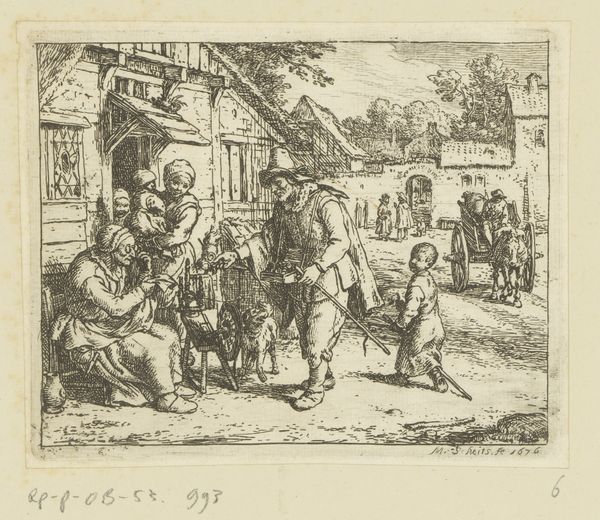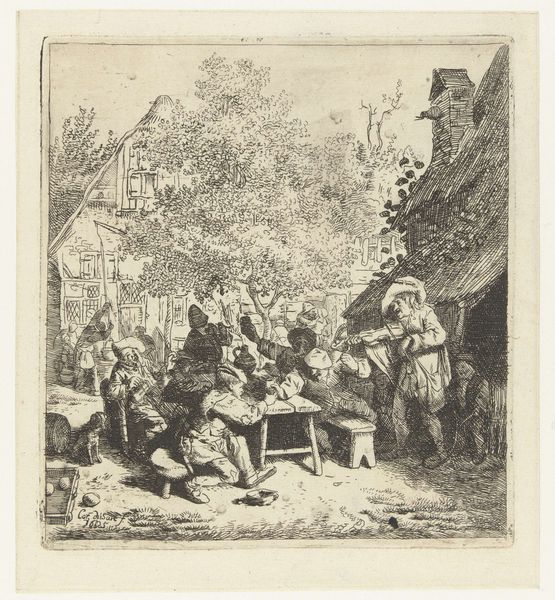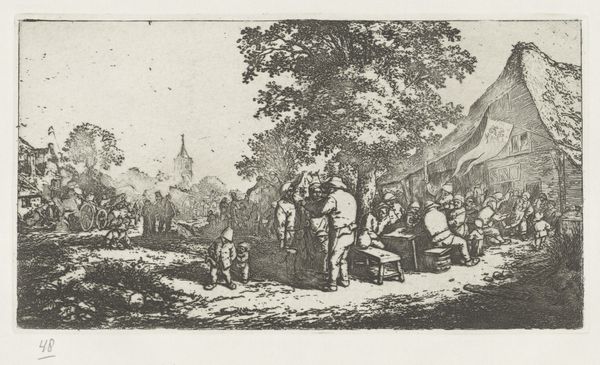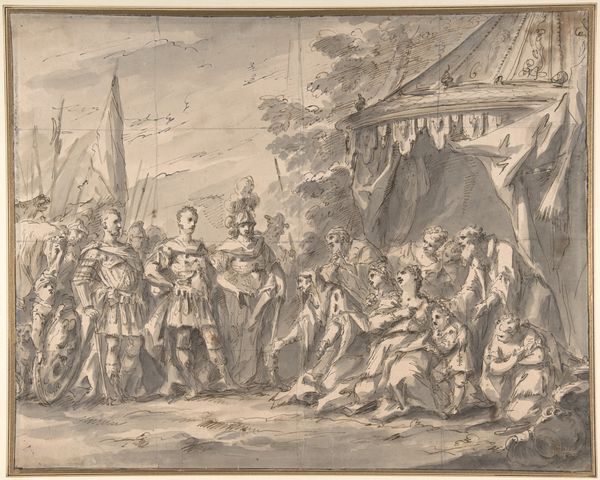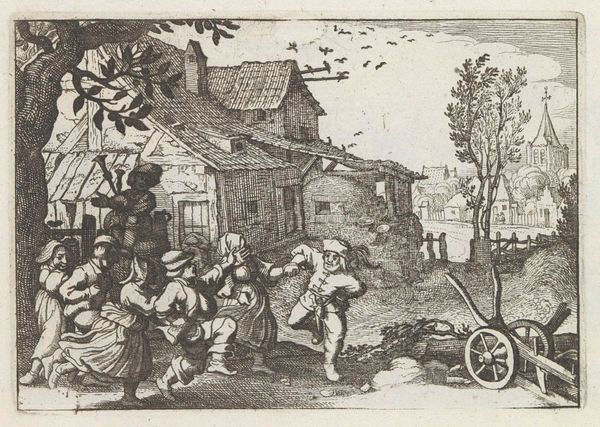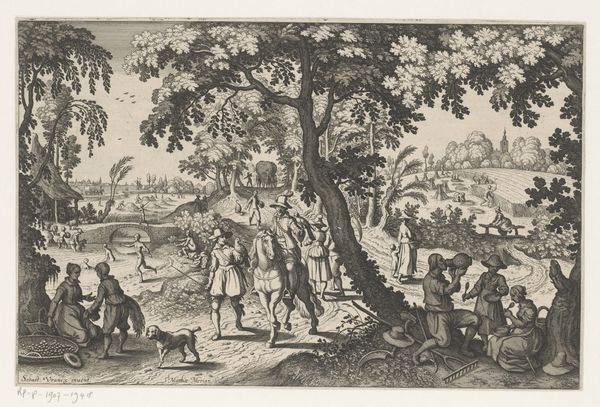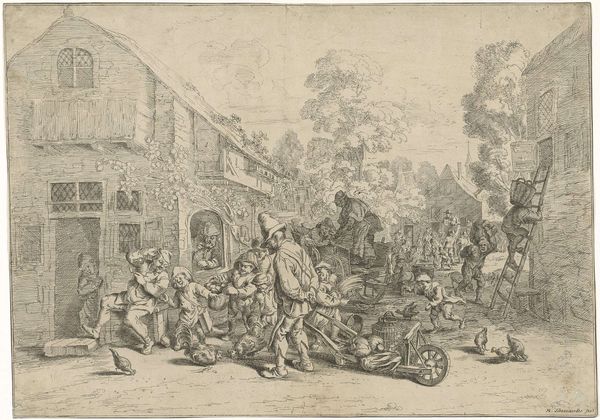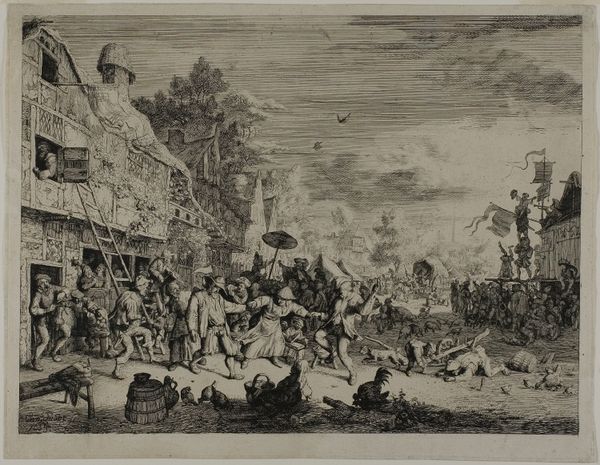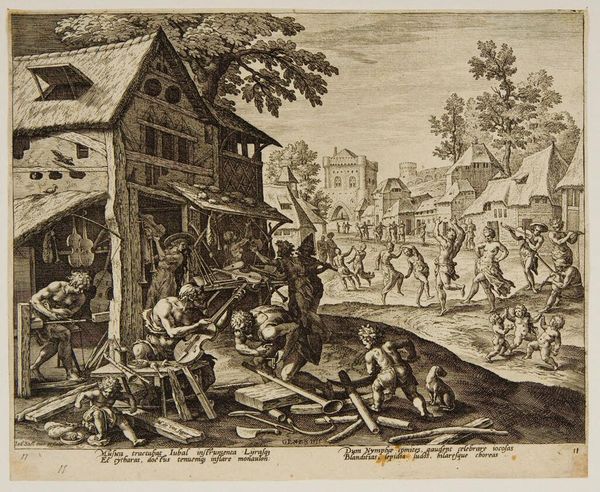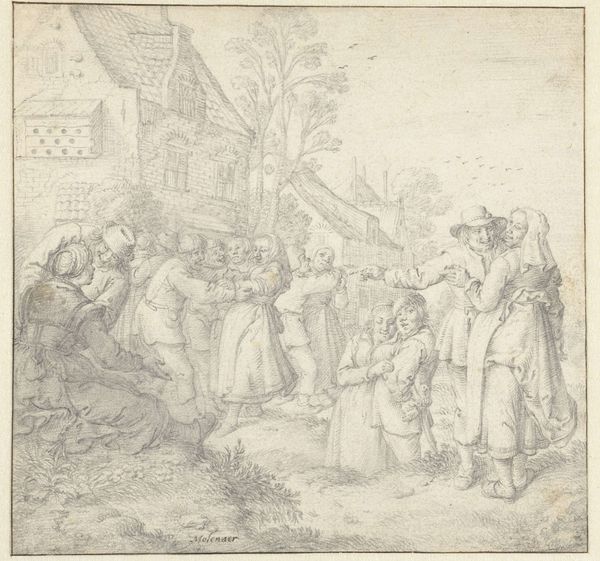
drawing, print, ink
#
drawing
#
narrative-art
#
dutch-golden-age
# print
#
caricature
#
dog
#
landscape
#
figuration
#
ink
#
genre-painting
Dimensions: sheet: 7 15/16 x 12 5/16 in. (20.2 x 31.2 cm)
Copyright: Public Domain
Curator: This ink drawing, dating from 1693, is entitled "An Itinerant Peddler in a Village," and it's the work of Cornelis Dusart. The composition, while dynamic, gives me an impression of organized chaos. The monochromatic rendering makes it slightly unsettling; everything appears flattened. Editor: Yes, there's a frenetic energy here, isn't there? So much clamor and merriment erupting all at once. Notice how Dusart utilizes the figure of the peddler not just as a central element, but almost as a cultural lightning rod around which village life seems to pulse and swirl. Curator: I see the structure functioning on multiple levels. On the one hand, we have the detailed rendering of forms suggesting an almost baroque fullness, particularly in the peddler’s immediate surroundings, contrasted with the thinner application further in the background, emphasizing spatial recession, giving this composition depth despite the two-dimensional flatness. Editor: Indeed. Think of the peddler and his wares--a fascinating blend of the sacred and the profane. I see what seems to be a statuette or effigy hoisted aloft, while the other objects could range from domestic tools to toys. It represents commerce but is tied into something deeper: the human desire for the talismanic object, a physical symbol of hope, fortune, or identity. It ties deeply into their cultural belief systems. Curator: That's astute. The convergence of detail versus the more diffuse applications further into the scene also creates a symbolic contrast between individual action and collective experience. This reminds the viewer that we must look beyond the action taking place with the figures in the center to view the town. Editor: Also note the dog, running ahead and unburdened; such creatures have long served as symbols of guidance. Notice, also, the somewhat jeering faces emerging from the architecture-- perhaps suspicion about newcomers. The narrative teems with human character types, all caught up in this everyday theater of survival and commerce. Curator: Yes, but beyond mere storytelling, it’s in the skillful articulation of volume through limited tonal variation. It exemplifies that in Dutch Golden Age art even common narratives can hold great artistic refinement, particularly within a deliberately chosen compositional structure. Editor: Absolutely. It is one thing to note its composition, and another to reflect on this art's value as a cultural repository of a community's fears and desires. An exquisite time capsule if ever I saw one.
Comments
No comments
Be the first to comment and join the conversation on the ultimate creative platform.

